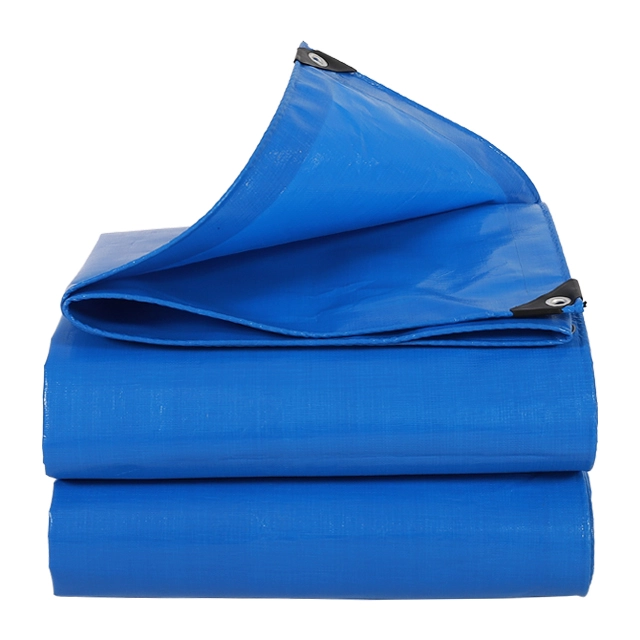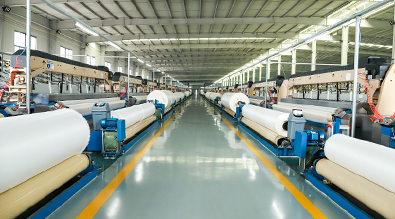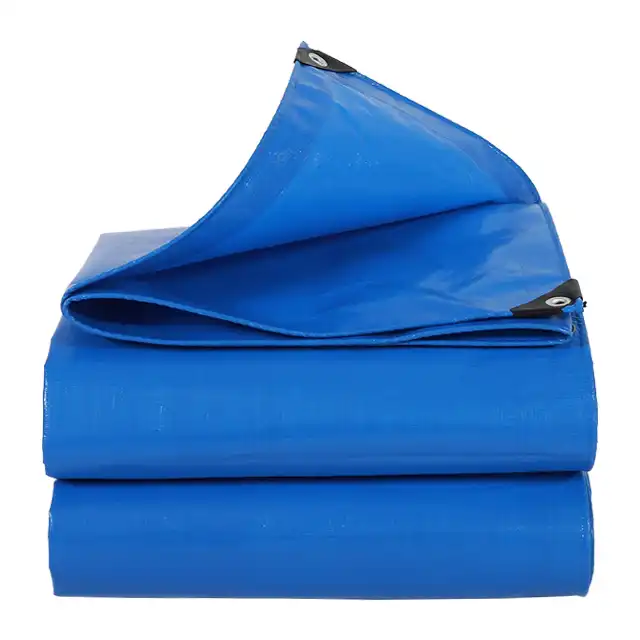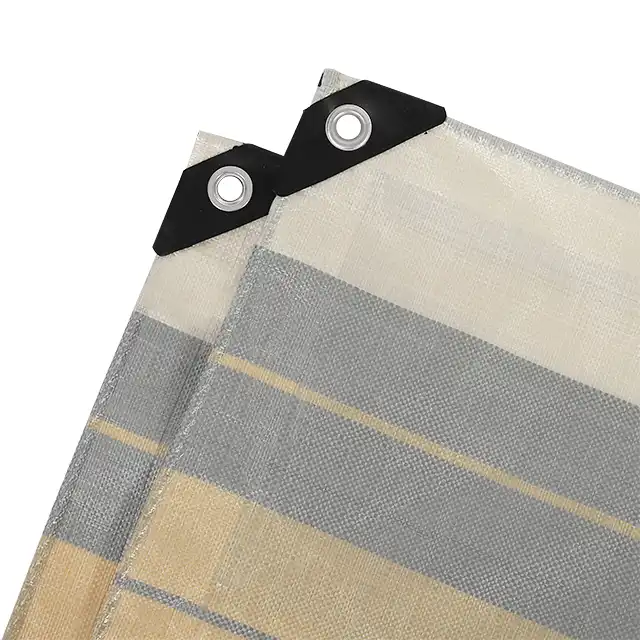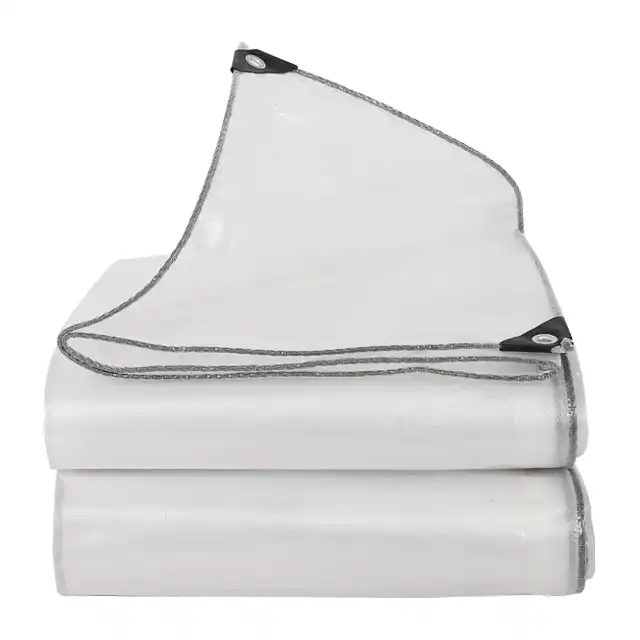Clear Tarpaulin Sheets vs Colored Tarps: Which Is Better for Storage
When it comes to selecting the right protective covering for storage applications, the choice between clear tarpaulin sheets and colored tarps can significantly impact functionality, durability, and cost-effectiveness. Clear tarpaulin offers unique advantages for storage scenarios where visibility, light transmission, and transparency are essential, while colored tarps provide specific benefits related to heat management, UV protection, and aesthetic considerations. Understanding the distinct characteristics of each option helps determine which solution best meets your storage requirements and environmental conditions. The answer to "Clear Tarpaulin Sheets vs Colored Tarps: Which Is Better for Storage" largely depends on your specific storage needs. Clear tarpaulin excels in applications requiring visibility and natural light penetration while maintaining weather protection, making it ideal for greenhouse storage, equipment monitoring, and temporary shelters. Colored tarps, particularly light colors like white and silver, offer superior heat reflection and UV resistance, making them better for long-term outdoor storage in harsh sunlight conditions.

Visibility and Transparency Advantages of Clear Tarpaulin for Storage
Enhanced Monitoring and Security Benefits
Clear tarpaulin sheets provide unparalleled visibility advantages that make them exceptional for storage applications requiring constant monitoring or security oversight. The transparent nature of these covers allows users to inspect stored items without removing or lifting the protective covering, significantly reducing handling time and potential exposure to weather elements. This feature proves particularly valuable in commercial storage facilities, construction sites, and agricultural operations where quick visual assessments are necessary for inventory management and quality control. Professional-grade clear tarpaulin materials, such as those manufactured with HDPE woven fabric and LDPE coating technology, maintain their transparency while delivering robust protection against moisture, wind, and debris. The ability to see through the covering also enhances security by allowing surveillance systems and personnel to monitor stored goods effectively, deterring theft and unauthorized access while maintaining complete weather protection.
Natural Light Transmission for Plant Storage and Greenhouse Applications
One of the most significant advantages of clear tarpaulin lies in its ability to transmit natural sunlight while providing comprehensive weather protection, making it ideal for plant storage and greenhouse applications. This unique characteristic allows stored plants, seedlings, and agricultural products to continue receiving essential light for photosynthesis and growth processes even under protective covering. The transparent material creates a greenhouse effect by trapping warm air while allowing sunlight penetration, which proves beneficial for temperature-sensitive storage requirements during colder months. High-quality clear tarpaulin options feature UV treatment ranging from 1% to 7%, which protects the material from degradation while still permitting beneficial light wavelengths to reach stored items. This makes clear tarpaulin an excellent choice for seasonal plant storage, nursery operations, and temporary growing structures where maintaining optimal growing conditions is crucial for plant health and productivity.
Aesthetic and Professional Appearance Benefits
Clear tarpaulin offers superior aesthetic appeal compared to traditional colored tarps, particularly in residential, commercial, and professional settings where visual appearance matters. The transparent nature of clear tarpaulin creates a less obtrusive covering solution that doesn't detract from the surrounding environment or architectural features. This makes it ideal for applications such as patio enclosures, temporary event coverage, and residential storage where maintaining visual appeal is important. Professional installations using clear tarpaulin appear more refined and intentional compared to brightly colored alternatives that may clash with existing design elements. Additionally, clear tarpaulin allows natural lighting to illuminate covered areas, creating more pleasant and functional spaces for activities that may occur under the covering. The professional appearance of clear tarpaulin also makes it suitable for commercial applications where brand image and customer perception are important considerations, providing practical protection without compromising aesthetic standards.
Environmental Performance and Durability Comparison
Weather Resistance and Climate Adaptability
The environmental performance of clear tarpaulin versus colored tarps varies significantly based on climate conditions and specific weather challenges. Clear tarpaulin materials excel in moderate climates where temperature regulation and light transmission are priorities, offering excellent protection against rain, wind, and debris while allowing natural heating from sunlight. However, in extremely hot climates, colored tarps, particularly white and silver options, provide superior heat reflection capabilities that can reduce internal temperatures by up to 20 degrees Fahrenheit compared to clear alternatives. Modern clear tarpaulin products manufactured with advanced materials like HDPE woven fabric combined with LDPE coating demonstrate impressive weather resistance, maintaining flexibility in temperatures ranging from arctic conditions to moderate heat. The waterproof construction ensures complete moisture protection while the tear-resistant design withstands strong winds and mechanical stress. For storage applications in variable climates, clear tarpaulin offers the advantage of seasonal adaptability, providing warming benefits during cooler months while offering protection year-round.
UV Protection and Long-term Durability Factors
Long-term durability represents a critical consideration when choosing between clear tarpaulin and colored alternatives for storage applications. High-quality clear tarpaulin products incorporate UV treatment technology that protects both the tarp material and stored items from harmful ultraviolet radiation. Professional-grade clear tarpaulin typically includes UV stabilizers ranging from 1% to 7% concentration, significantly extending the material's lifespan compared to untreated alternatives. Colored tarps, particularly darker shades, naturally absorb more UV radiation, which can lead to faster material degradation but may provide better protection for UV-sensitive stored items. The durability of clear tarpaulin depends heavily on manufacturing quality, with products featuring reinforced corners, rust-resistant grommets spaced every 36 inches, and multi-layer construction demonstrating superior longevity. Advanced manufacturing processes using automatic water-jet looms and precision coating machines ensure consistent material thickness and enhanced durability characteristics that can withstand demanding storage environments for extended periods.
Material Composition and Construction Quality
The material composition and construction quality of clear tarpaulin significantly impact its performance compared to colored alternatives in storage applications. Premium clear tarpaulin products utilize advanced polymer combinations, typically featuring HDPE (High-Density Polyethylene) woven fabric as the base layer with LDPE (Low-Density Polyethylene) coating for waterproofing and flexibility. This construction provides superior tear resistance, puncture protection, and dimensional stability compared to basic polyethylene films. The weaving process using sophisticated water-jet looms creates fabric widths up to 5 meters without joints, reducing potential failure points and enhancing overall durability. Quality clear tarpaulin incorporates anti-freezing properties that maintain flexibility in cold conditions, while shrink-proof treatments ensure dimensional stability across temperature variations. The laminated construction process bonds multiple layers to create a unified material that resists delamination and maintains clarity over extended use periods. Manufacturing specifications including mesh counts from 10x10 to 14x14 and thickness ranging from 7 to 12 mil provide options for different durability requirements and storage applications.
Cost-Effectiveness and Application-Specific Considerations
Economic Analysis and Total Cost of Ownership
When evaluating the cost-effectiveness of clear tarpaulin versus colored tarps for storage applications, the total cost of ownership extends beyond initial purchase price to include durability, maintenance requirements, and functional benefits. Clear tarpaulin typically commands a premium price compared to basic colored alternatives due to specialized manufacturing processes and enhanced material properties. However, the extended lifespan and multi-functional capabilities often justify the higher initial investment. The transparency feature eliminates the need for frequent uncovering to inspect stored items, reducing labor costs and minimizing weather exposure risks. Professional-grade clear tarpaulin with reinforced construction can provide 3-5 years of reliable service in demanding outdoor conditions, while basic colored tarps may require replacement every 1-2 years depending on environmental exposure. The ability to maintain natural lighting under clear tarpaulin coverage can reduce artificial lighting costs in storage areas and work spaces, providing additional economic benefits over the product's lifespan.
Specialized Storage Applications and Industry Requirements
Different industries and storage applications present unique requirements that favor either clear tarpaulin or colored alternatives based on specific functional needs. Agricultural operations benefit significantly from clear tarpaulin's light transmission properties for plant storage, greenhouse applications, and seasonal crop protection. Construction and industrial storage applications may prefer colored tarps for their superior heat reflection and UV protection of sensitive materials and equipment. Clear tarpaulin excels in temporary structures, event coverage, and applications where visual monitoring is essential for security or quality control purposes. The food storage industry often utilizes clear tarpaulin for its transparency benefits in maintaining food safety standards through visual inspection capabilities. Marine and recreational vehicle storage applications benefit from clear tarpaulin's weather protection while allowing sunlight to prevent moisture buildup and mold growth. The selection process should consider factors such as storage duration, environmental conditions, item sensitivity, and operational requirements to determine the most suitable option.
Maintenance Requirements and Replacement Considerations
The maintenance requirements for clear tarpaulin differ from colored alternatives, influencing long-term cost considerations and operational planning. Clear tarpaulin requires regular cleaning to maintain transparency and visual clarity, typically involving mild detergent solutions and soft cleaning tools to avoid scratching the surface. The transparent material shows dirt, dust, and debris more readily than colored alternatives, necessitating more frequent cleaning in dusty environments. However, the cleaning process is straightforward and doesn't require specialized equipment or chemicals. Colored tarps may show wear patterns and fading more noticeably over time, while clear tarpaulin maintains its appearance better but may develop cloudiness or yellowing with extended UV exposure if not properly treated. Quality indicators for replacement include loss of transparency, material brittleness, tear development, or grommet failure. Professional-grade clear tarpaulin with advanced UV protection and reinforced construction typically maintains functionality and appearance longer than basic alternatives, reducing replacement frequency and associated costs. Storage conditions between uses also impact longevity, with proper cleaning, drying, and storage in cool, dry conditions extending material life significantly.
Conclusion
The choice between clear tarpaulin sheets and colored tarps for storage ultimately depends on specific application requirements, environmental conditions, and operational priorities. Clear tarpaulin offers unique advantages in visibility, light transmission, and aesthetic appeal, making it ideal for applications requiring monitoring, plant storage, or professional appearance. Colored alternatives excel in heat management and UV protection for long-term outdoor storage in harsh climates.
When selecting the optimal storage covering solution, consider partnering with established manufacturers who demonstrate proven expertise and quality standards. Linyi Shengde Plastic Co., Ltd., a leading China Clear Tarpaulin factory established in 2003, offers comprehensive solutions for diverse storage applications. As a trusted China Clear Tarpaulin supplier and China Clear Tarpaulin manufacturer, Shengde provides high-quality products through their extensive China Clear Tarpaulin wholesale operations, ensuring Clear Tarpaulin for sale meets international standards. Their competitive Clear Tarpaulin price structure and commitment to High Quality Clear Tarpaulin production, backed by ISO 9001:2015 certification and partnerships with international organizations like UNHCR and UNICEF, demonstrates reliability and professionalism. For detailed product specifications and customized solutions, contact their expert team at info@shengdetarp.com to discuss your specific storage requirements.
References
1. "Tarpaulin Materials and Construction Standards for Industrial Applications" - Industrial Fabric Association International, Manufacturing Standards Committee
2. "Polyethylene Tarp Performance in Various Climate Conditions" - American Society for Testing and Materials, Weather Resistance Research Division
3. "UV Protection and Durability Factors in Transparent Plastic Materials" - Plastics Engineering Society, Material Sciences Research Group
4. "Cost-Benefit Analysis of Storage Covering Solutions in Commercial Applications" - International Association of Equipment Lessors, Storage Solutions Research Institute
